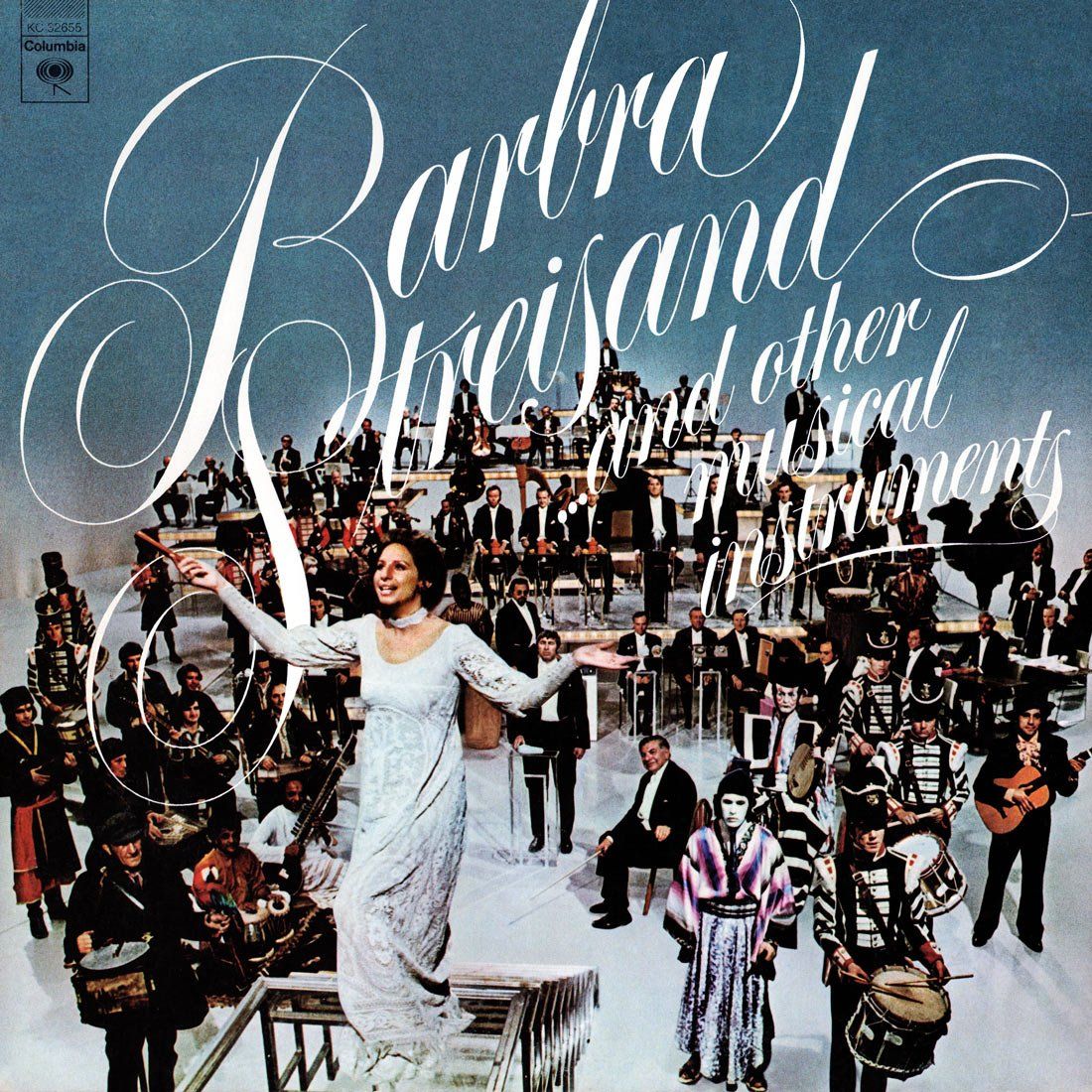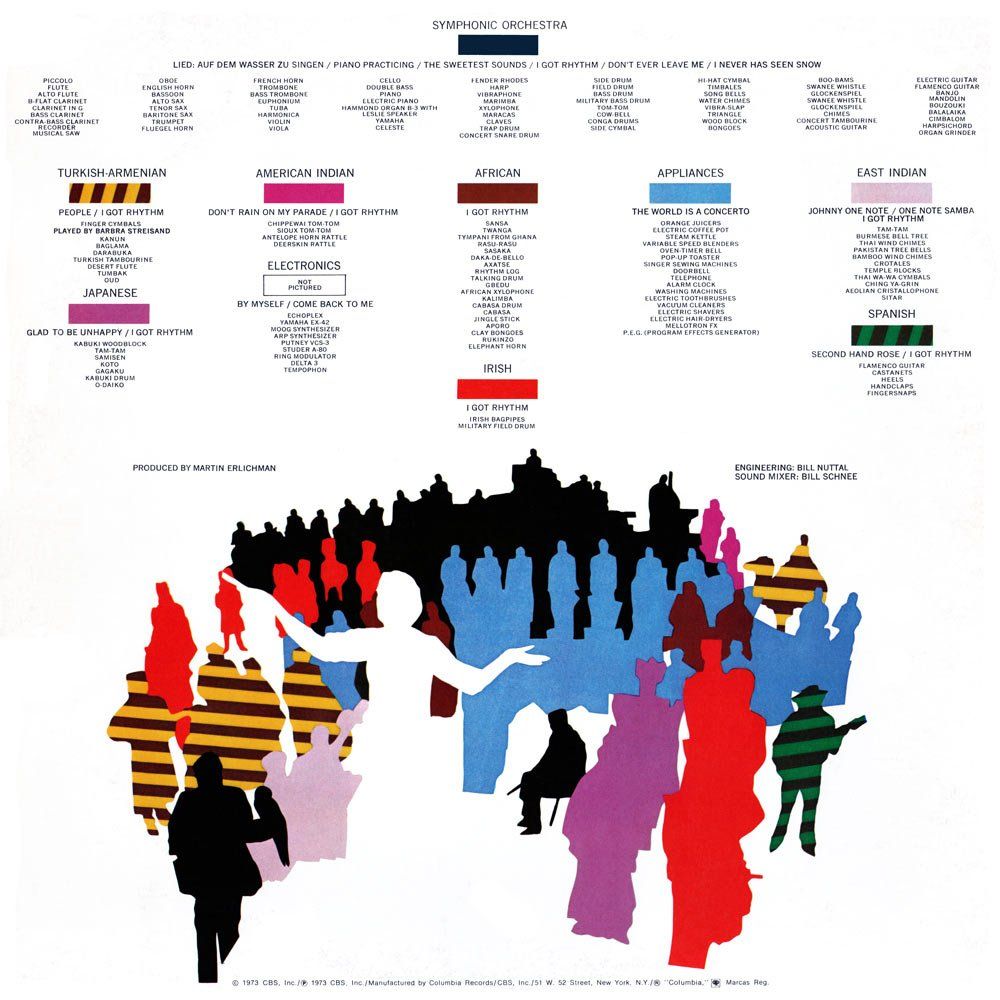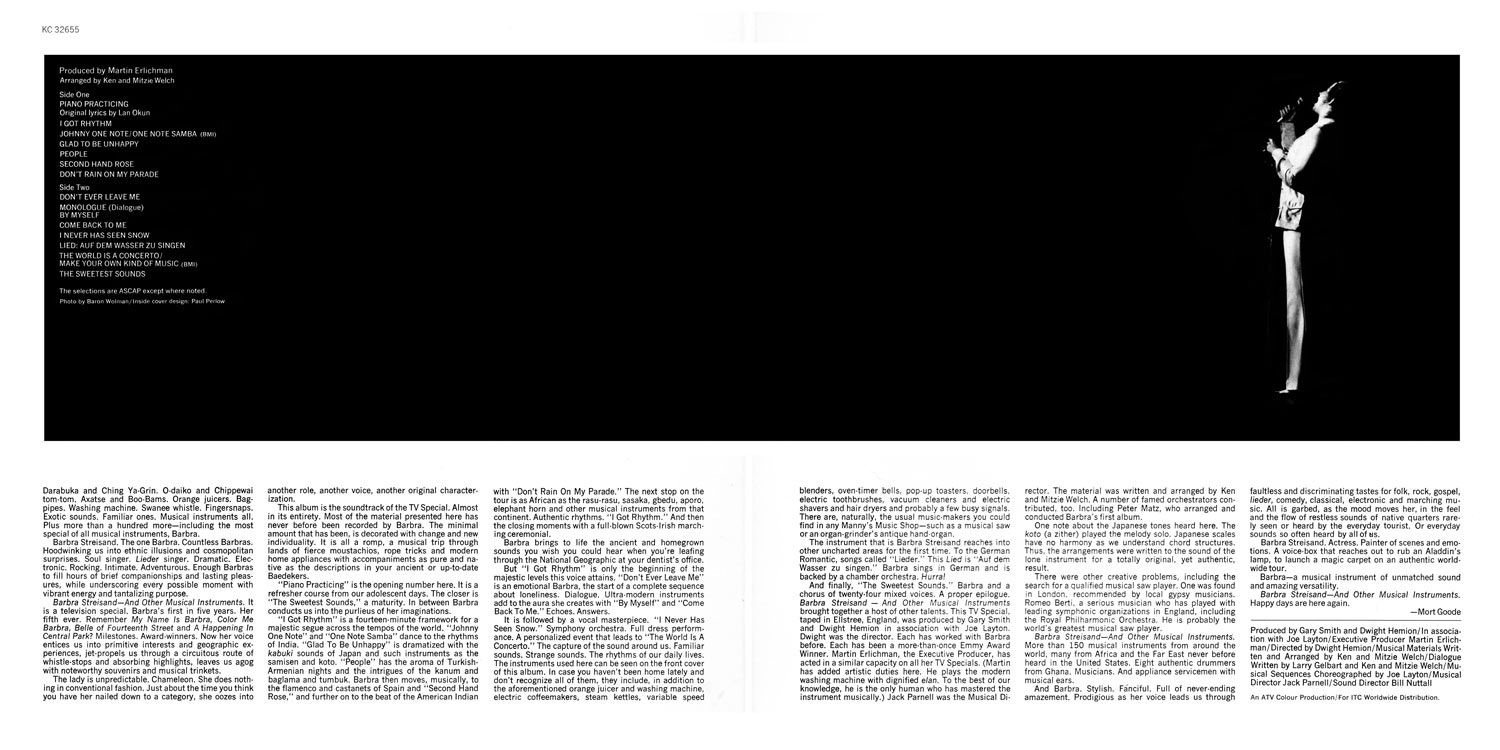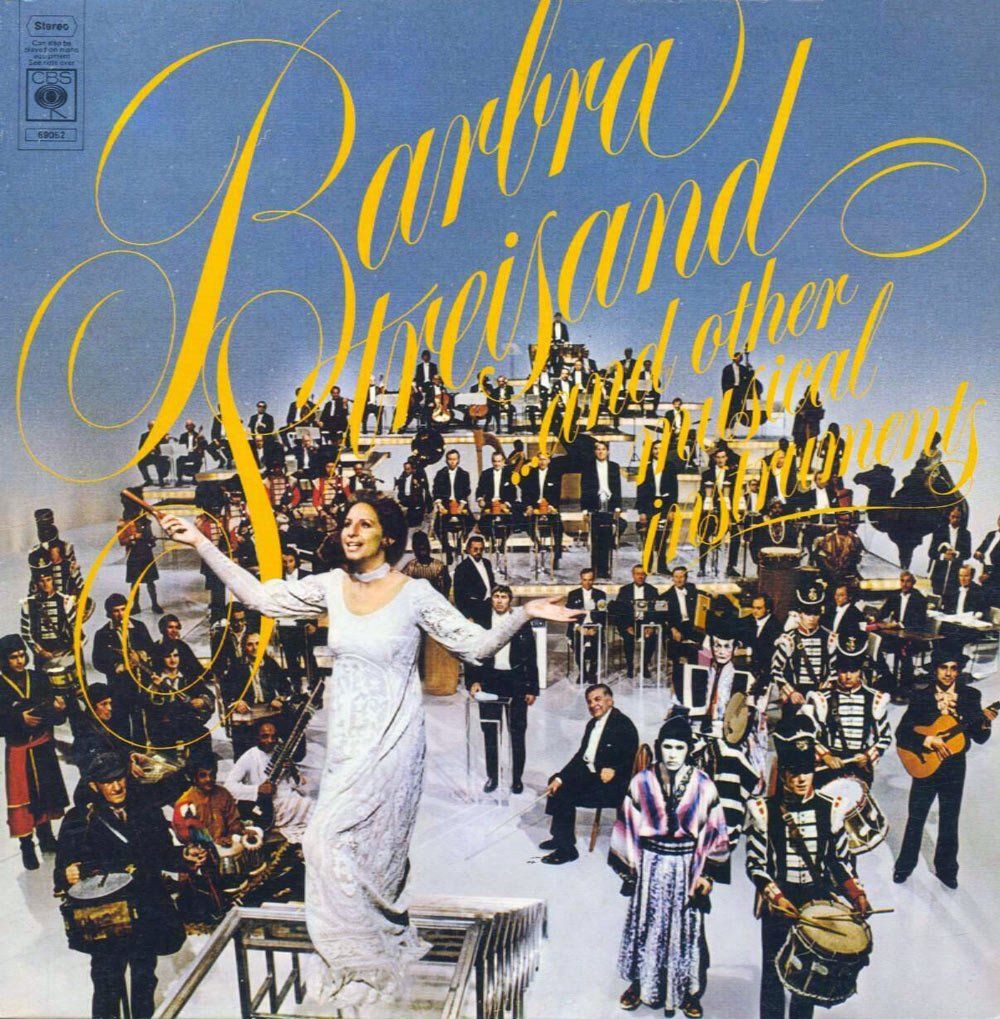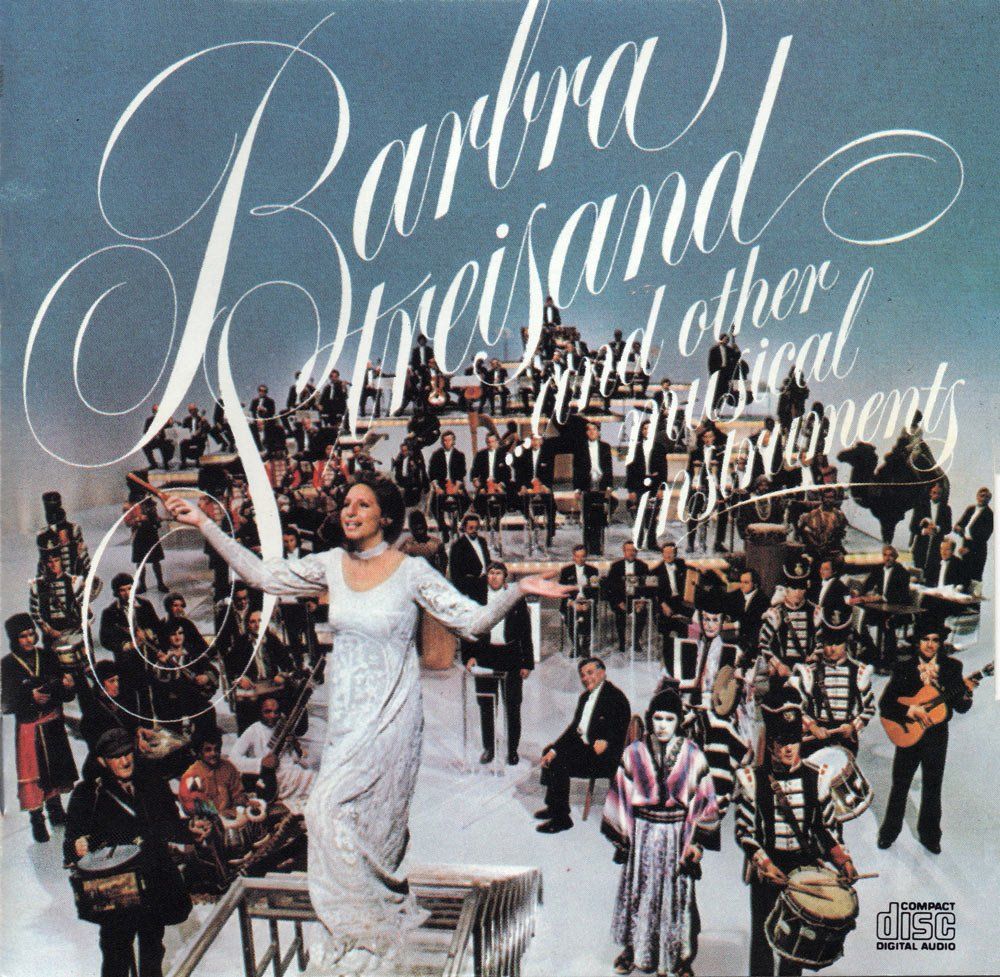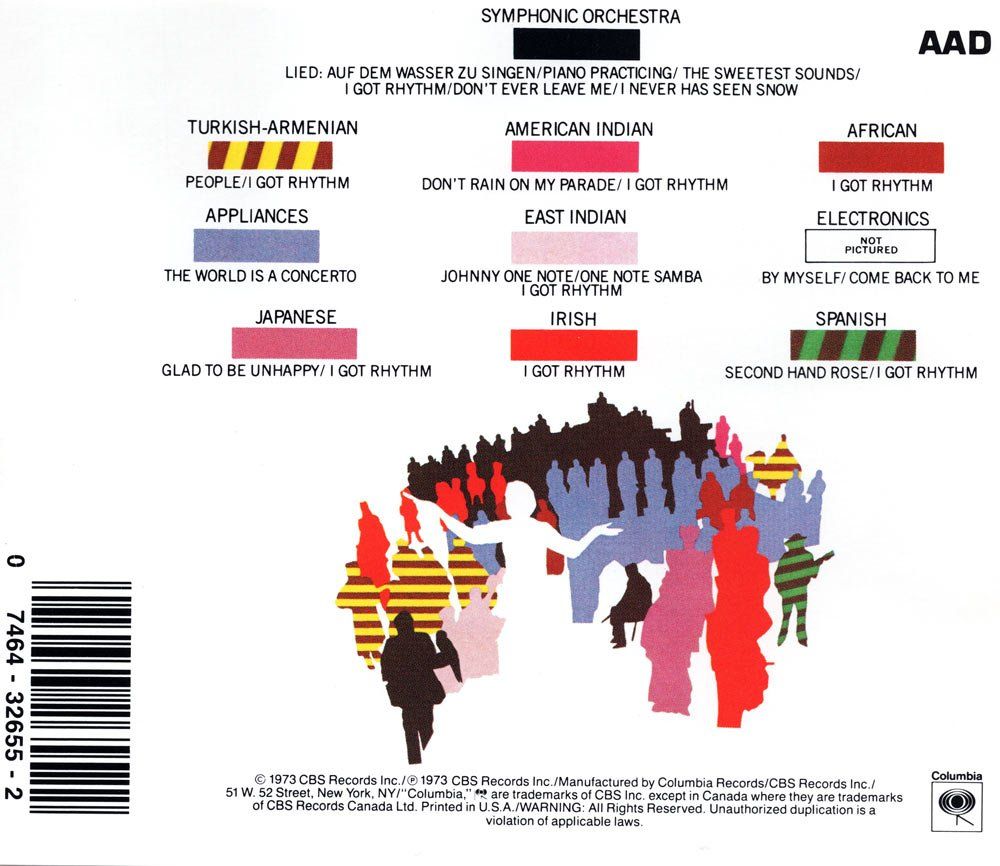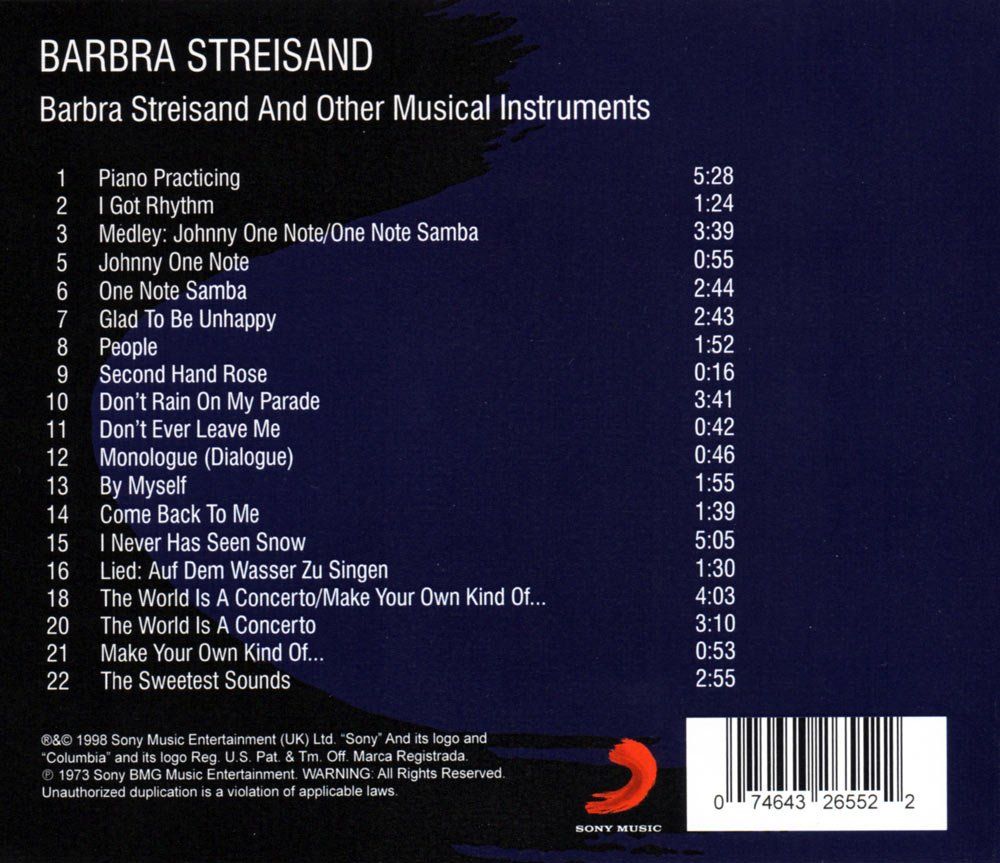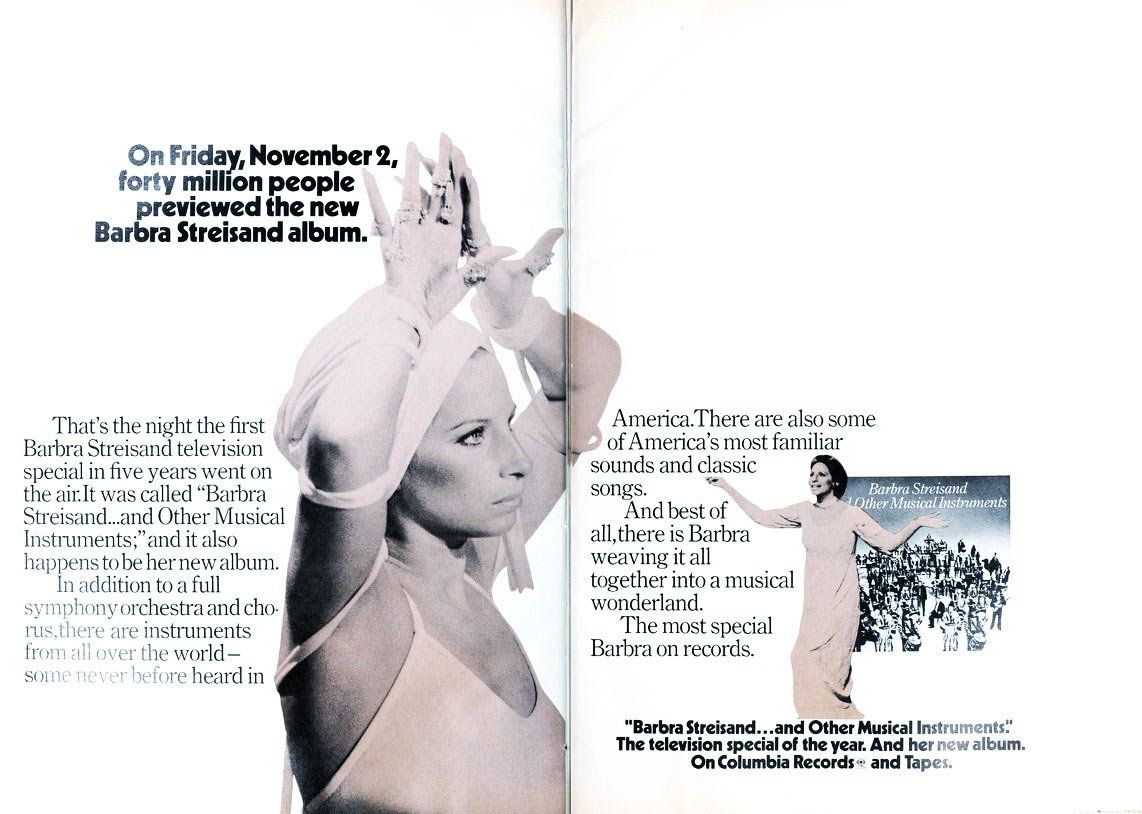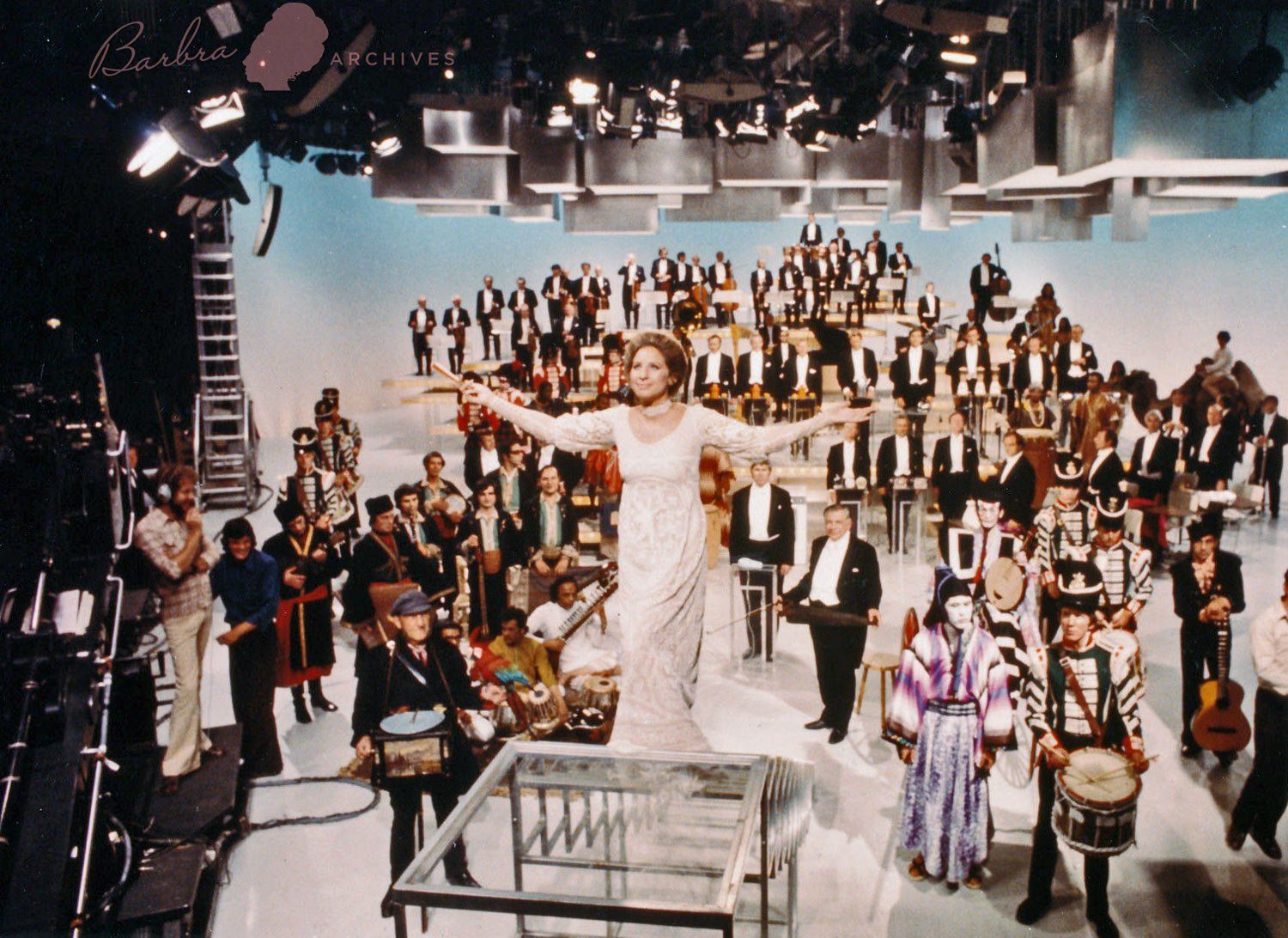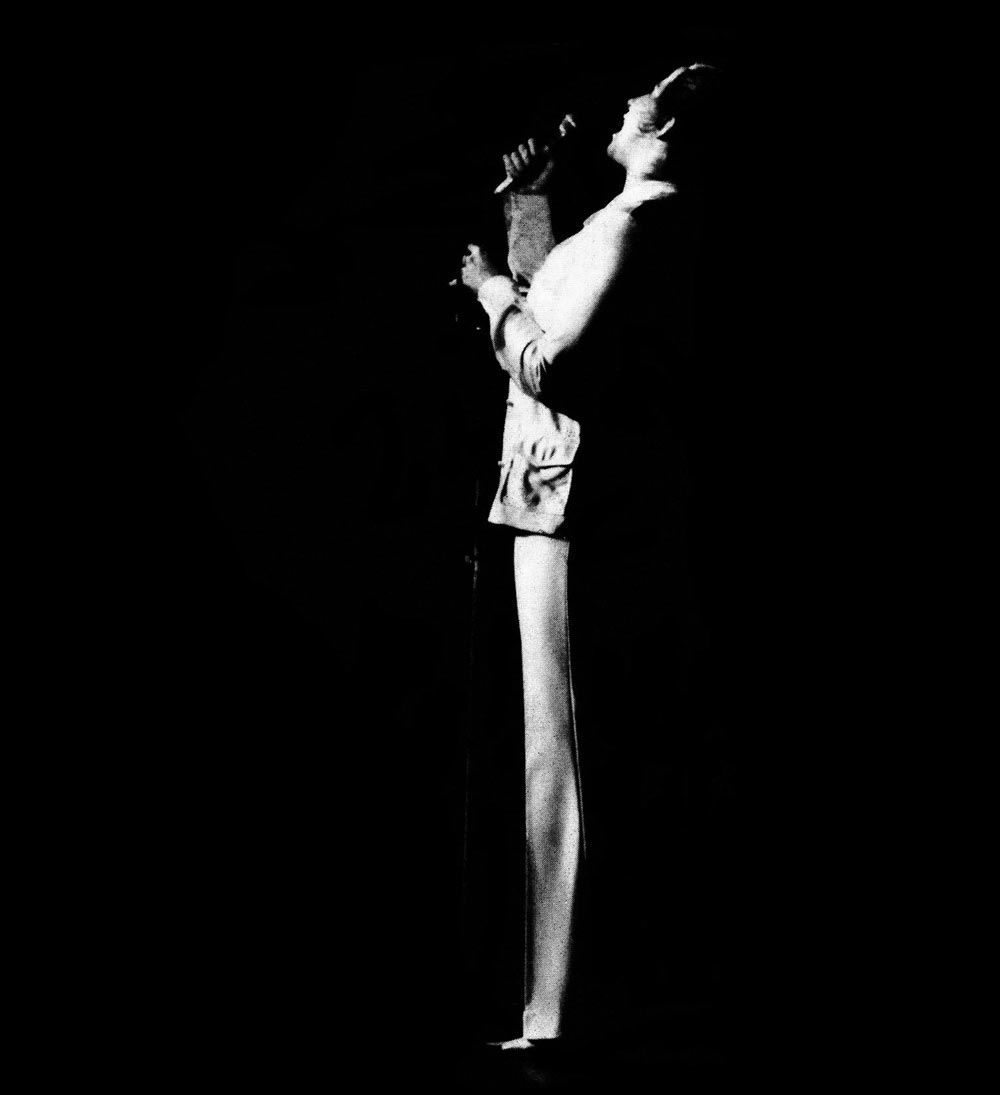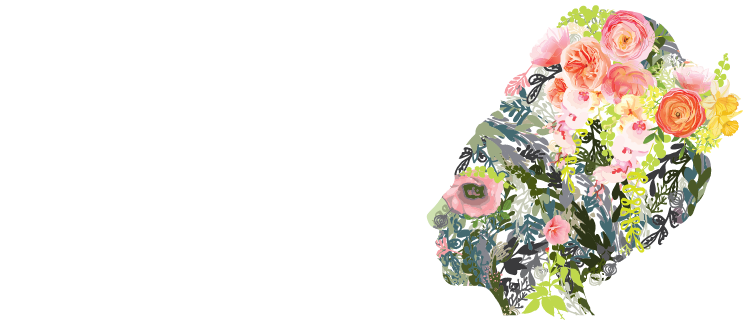These are the original liner notes from the album:
Darabuka and Ching Ya-Grin. 0-daiko and Chippewai tom-tom. Axatse and Boo-Bams. Orange juicers. Bag-pipes. Washing machine. Swanee whistle. Fingersnaps. Exotic sounds. Familiar ones. Musical instruments all. Plus more than a hundred more—including the most special of all musical instruments, Barbra.
Barbra Streisand. The one Barbra. Countless Barbras. Hoodwinking us into ethnic illusions and cosmopolitan surprises. Soul singer. Lieder singer. Dramatic. Electronic. Rocking. Intimate. Adventurous. Enough Barbras to fill hours of brief companionships and lasting pleasures, while underscoring every possible moment with vibrant energy and tantalizing purpose.
Barbra Streisand—And Other Musical Instruments. It is a television special. Barbra’s first in five years. Her fifth ever. Remember My Name ls Barbra, Color Me Barbra, Belle of Fourteenth Street and A Happening In Central Park? Milestones. Award-winners. Now her voice entices us into primitive interests and geographic experiences, jet-propels us through a circuitous route of whistle-stops and absorbing highlights, leaves us agog with noteworthy souvenirs and musical trinkets.
The lady is unpredictable. Chameleon. She does nothing in conventional fashion. Just about the time you think you have her nailed down to a category, she oozes into another role, another voice, another original characterization.
This album is the soundtrack of the TV Special. Almost in its entirety. Most of the material presented here has never before been recorded by Barbra. The minimal amount that has been, is decorated with change and new individuality. It is all a romp, a musical trip through lands of fierce moustachios, rope tricks and modern home appliances with accompaniments as pure and native as the descriptions in your ancient or up-to-date Baedekers.
“Piano Practicing” is the opening number here. It is a refresher course from our adolescent days. The closer is “The Sweetest Sounds," a maturity. ln between Barbra conducts us into the purlieus of her imaginations.
“l Got Rhythm” is a fourteen-minute framework for a majestic segue across the tempos of the world. “Johnny One Note" and “One Note Samba” dance to the rhythms of India. “Glad To Be Unhappy” is dramatized with the kabuki sounds of Japan and such instruments as the samisen and koto. “People" has the aroma of Turkish-Armenian nights and the intrigues of the kanum and baglama and tumbuk. Barbra then moves, musically, to the flamenco and castanets of Spain and “Second Hand Rose,” and further on to the beat of the American Indian with “Don't Rain On My Parade." The next stop on the tour is as African as the rasu-rasu, sasaka, gbedu, aporo, elephant horn and other musical instruments from that continent. Authentic rhythms. “l Got Rhythm." And then the closing moments with a full-blown Scots-Irish marching ceremonial.
Barbra brings to life the ancient and homegrown sounds you wish you could hear when you're leafing through the National Geographic at your dentist's office.
But “l Got Rhythm" is only the beginning of the majestic levels this voice attains. “Don't Ever Leave Me" is an emotional Barbra, the start of a complete sequence about loneliness. Dialogue. Ultra-modern instruments add to the aura she creates with "By Myself" and “Come Back To Me.” Echoes. Answers.
lt is followed by a vocal masterpiece. "l Never Has Seen Snow.” Symphony orchestra. Full dress performance. A personalized event that leads to “The World Is A Concerto." The capture of the sound around us. Familiar sounds. Strange sounds. The rhythms of our daily lives. The instruments used here can be seen on the front cover of this album. In case you haven't been home lately and don't recognize all of them, they include, in addition to the aforementioned orange juicer and washing machine, electric coffeemakers, steam kettles, variable speed blenders, oven-timer bells, pop-up toasters, doorbells, electric toothbrushes, vacuum cleaners and electric shavers and hair dryers and probably a few busy signals. There are, naturally, the usual music-makers you could find in any Manny's Music Shop—such as a musical saw or an organ-grinder’s antique hand-organ.
The instrument that is Barbra Streisand reaches into other uncharted areas for the first time. To the German Romantic, songs called “Lieder.” This Lied is “Auf dem Wasser zu singen." Barbra sings in German and is backed by a chamber orchestra. Hurra!
And finally, “The Sweetest Sounds." Barbra and a chorus of twenty-four mixed voices. A proper epilogue. Barbra Streisand — And Other Musical Instruments brought together a host of other talents. This TV Special, taped in Ellstree, England, was produced by Gary Smith and Dwight Hemion in association with Joe Layton. Dwight was the director. Each has worked with Barbra before. Each has been a more-than-once Emmy Award Winner. Martin Erlichman, the Executive Producer, has acted in a similar capacity on all her TV Specials. (Martin has added artistic duties here. He plays the modern washing machine with dignified elan. To the best of our knowledge, he is the only human who has mastered the instrument musically.) Jack Parnell was the Musical Director. The material was written and arranged by Ken and Mitzie Welch. A number of famed orchestrators contributed, too. Including Peter Matz, who arranged and conducted Barbra's first album.
One note about the Japanese tones heard here. The koto (a zither) played the melody solo. Japanese scales have no harmony as we understand chord structures. Thus, the arrangements were written to the sound of the lone instrument for a totally original, yet authentic, result.
There were other creative problems, including the search for a qualified musical saw player. One was found in London, recommended by local gypsy musicians. Romeo Berti, a serious musician who has played with leading symphonic organizations in England, including the Royal Philharmonic Orchestra. He is probably the world's greatest musical saw player.
Barbra Streisand—And Other Musical instruments. More than 150 musical instruments from around the world, many from Africa and the Far East never before heard in the United States. Eight authentic drummers from Ghana. Musicians. And appliance servicemen with musical ears.
And Barbra. Stylish. Fanciful. Full of never-ending amazement. Prodigious as her voice leads us through faultless and discriminating tastes for folk, rock, gospel, lieder, comedy, classical, electronic and marching music. All is garbed, as the mood moves her, in the feel and the flow of restless sounds of native quarters rarely seen or heard by the everyday tourist. Or everyday sounds so often heard by all of us.
Barbra Streisand. Actress. Painter of scenes and emotions. A voice-box that reaches out to rub an Aladdin's lamp, to launch a magic carpet on an authentic world-wide tour.
Barbra—a musical instrument of unmatched sound and amazing versatility.
Barbra Streisand—And Other Musical Instruments. Happy days are here again.
— Mort Goode

